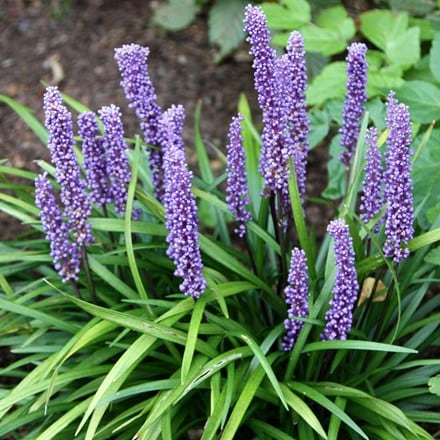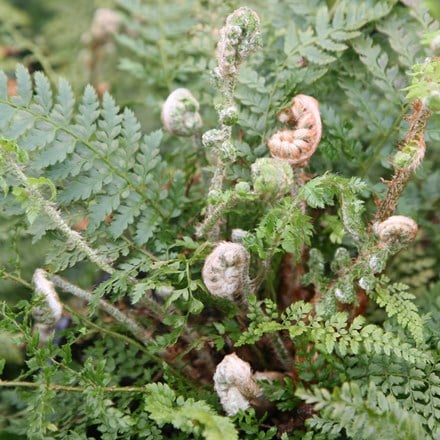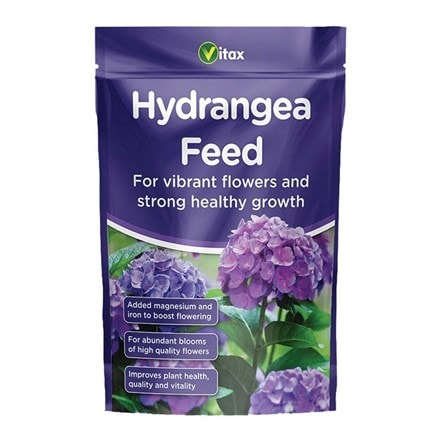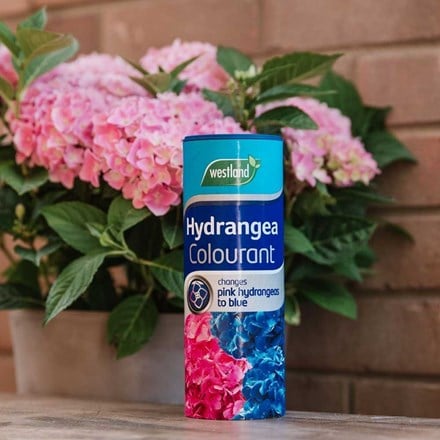Eventual height & spread
Hydrangea macrophylla 'Mariesii Perfecta'
lacecap hydrangea ( syn. Hydrangea Blue Wave )
- 2 litre pot
- £19.99
- In stock (shipped within 2-3 working days)
Delivery options
- Standard £5.99
- Position: full sun or partial shade
- Soil: moist, well-drained, moderately fertile, humus-rich soil
- Rate of growth: average
- Flowering period: July to August
- Hardiness: fully hardy
One of the most popular lacecap hydrangeas, Hydrangea macrophylla 'Mariesii Perfecta' bears flattened heads of rich blue, mauve or pink flowers depending on the acidity (pH) of the soil. These appear from July to August over coarsely toothed, glossy, dark green leaves.
Happiest in moist soil in partial shade and looks wonderful towards the back of a mixed or shrub border, particularly when planted with other hydrangeas.
Please note that the flowers of this hydrangea may arrive with pink or pinkish tones in our nursery compost mix.
Hydrangeas give their best blue flowers on acidic soils with a pH of 5.5. When grown on neutral to alkaline soil, the flowers will predominantly be pink, although you may also get blue or mauve blooms. To ensure that your hydrangea has blue-toned flowers, make sure the pH does not creep above 6.5. To lower the pH on neutral soils, treat the plant annually with a hydrangea flower colourant containing aluminium salts or lower the pH using soil acidifiers such as sulphur and sulphate of iron and adding composted material.
Happiest in moist soil in partial shade and looks wonderful towards the back of a mixed or shrub border, particularly when planted with other hydrangeas.
Please note that the flowers of this hydrangea may arrive with pink or pinkish tones in our nursery compost mix.
Hydrangeas give their best blue flowers on acidic soils with a pH of 5.5. When grown on neutral to alkaline soil, the flowers will predominantly be pink, although you may also get blue or mauve blooms. To ensure that your hydrangea has blue-toned flowers, make sure the pH does not creep above 6.5. To lower the pH on neutral soils, treat the plant annually with a hydrangea flower colourant containing aluminium salts or lower the pH using soil acidifiers such as sulphur and sulphate of iron and adding composted material.
Hydrangea thrives in moist, well-drained soil enriched with organic matter, making it important to improve the soil before planting by adding well-rotted compost or manure.
Choose a spot with partial shade, as full sun can scorch the leaves, especially in warmer climates, while deep shade may reduce flowering.
Regular watering is essential, particularly during dry spells, as these plants dislike drying out. To keep the soil cool and retain moisture, apply a layer of mulch around the base in spring, being careful not to let it touch the stems.
Pruning should be done with care. In early spring, remove any dead or damaged wood, but leave the old flowerheads on over winter to protect the buds below from frost.
For mophead and lacecap species, only prune back to the first pair of strong buds beneath the old flowers, as these types bloom on old wood. If necessary, remove one or two older stems down to the base to encourage new growth, but avoid cutting back the entire plant.
Fertilise in spring with a balanced feed, and for cultivars with colour-dependent blooms, test the soil pH. Adding hydrangea colourant (iron and aluminium salts) can enhance blue flowers in acidic soil, while lime can encourage pinker tones in alkaline conditions. It is best to choose according to the predominant soil conditions for best results on colour.
Choose a spot with partial shade, as full sun can scorch the leaves, especially in warmer climates, while deep shade may reduce flowering.
Regular watering is essential, particularly during dry spells, as these plants dislike drying out. To keep the soil cool and retain moisture, apply a layer of mulch around the base in spring, being careful not to let it touch the stems.
Pruning should be done with care. In early spring, remove any dead or damaged wood, but leave the old flowerheads on over winter to protect the buds below from frost.
For mophead and lacecap species, only prune back to the first pair of strong buds beneath the old flowers, as these types bloom on old wood. If necessary, remove one or two older stems down to the base to encourage new growth, but avoid cutting back the entire plant.
Fertilise in spring with a balanced feed, and for cultivars with colour-dependent blooms, test the soil pH. Adding hydrangea colourant (iron and aluminium salts) can enhance blue flowers in acidic soil, while lime can encourage pinker tones in alkaline conditions. It is best to choose according to the predominant soil conditions for best results on colour.
- Humans: Skin allergen; Pets: Harmful if eaten
Goes well with
Polystichum setiferum (Divisilobum Group) Herrenhausen
9cm pot
£5.99
In stock (shipped within 2-3 working days)




